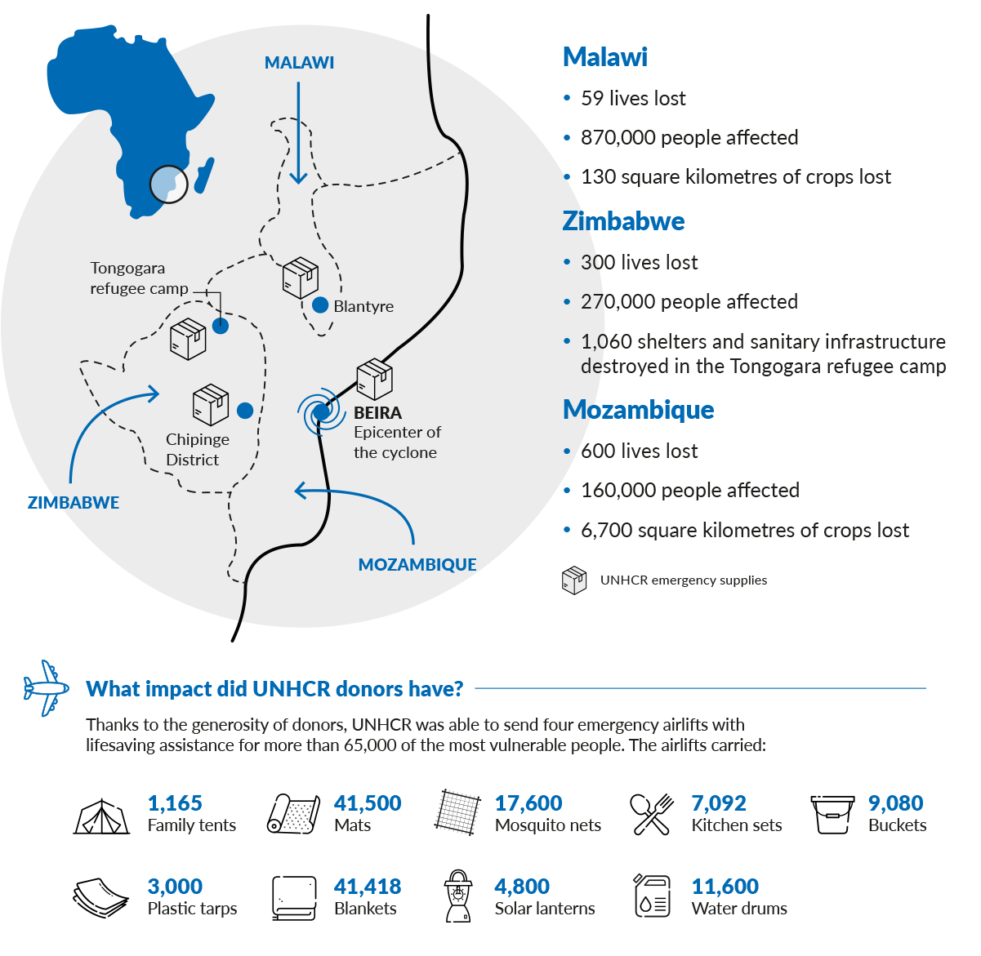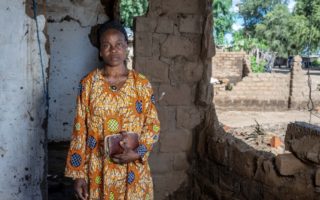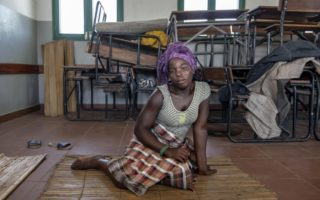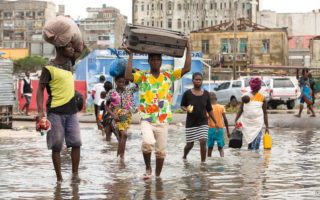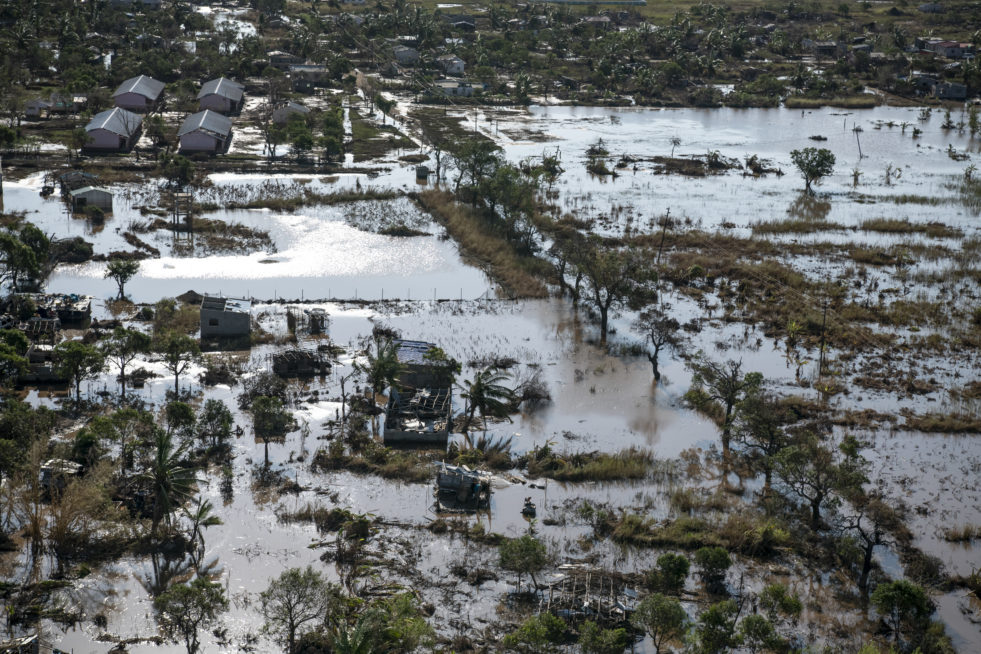
An aerial view of the extensive damage done by Cyclone Idai to the city of Beira, Mozambique in March 2019. ©UNHCR/Alissa Everett
UNHCR delivers emergency aid to help survivors rebuild
More than 200,00 people displaced
3 million people in the region were affecteed
3,500 cases of cholera identified in Mozambique
Approximately 6,000 refugees affected in the Tongogara refugee camp in Zimbabwe
On March 14, 2019, Cyclone Idai’s landfall in Mozambique wreaked havoc with strong winds and flood waters covering more than 3,000 square kilometres. This was the largest tropical cyclone to hit Africa. Just six weeks later, survivors of the first cyclone faced a new set of challenges when Cyclone Kenneth began approaching Mozambique’s coastline. This was the first time in recorded history when two consecutive cyclones struck the region. Tens of thousands of people lost their homes and livelihoods when torrential rains and flooding swept across Mozambique, Zimbabwe and Malawi. One of the areas that was severely affected was Tongogara refugee camp in Zimbabwe, home to more than 19,000 refugees, mainly from the Democratic Republic of Congo and Mozambique. Thanks to the quick response of generous donors, UNHCR was able to send four emergency airlifts containing lifesaving emergency aid for more than 65,000 of the most vulnerable people.
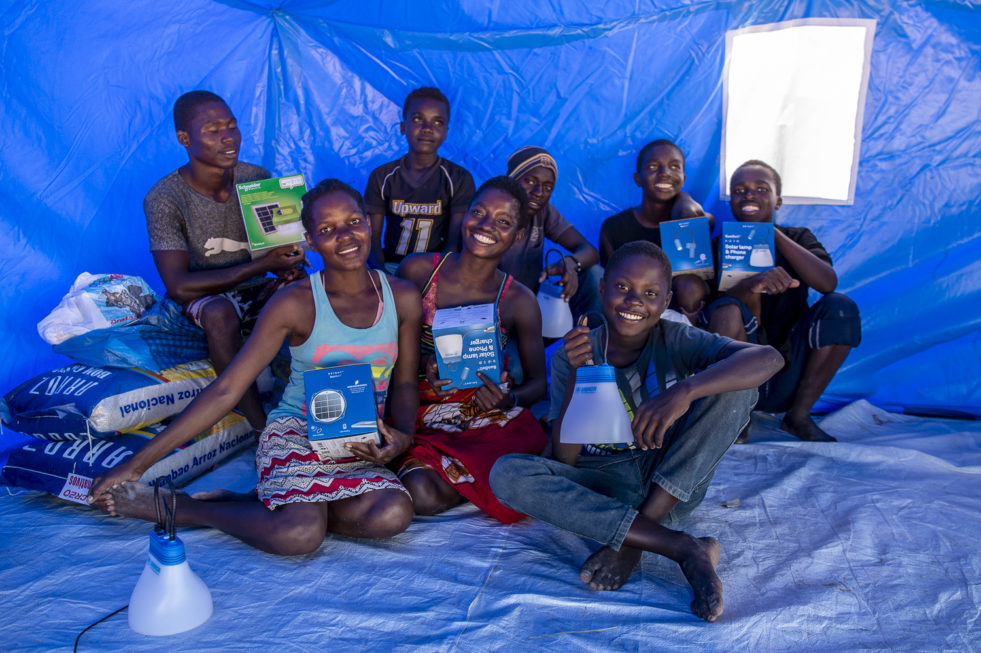
A family displaced by Cyclone Idai take UNHCR solar lanterns back to their tents in Picoco camp, Beira, Mozambique in April 2019. ©UNHCR/Alissa Everett
READ THE ONLINE EDITION OF THE UNHCR MAGAZINE



